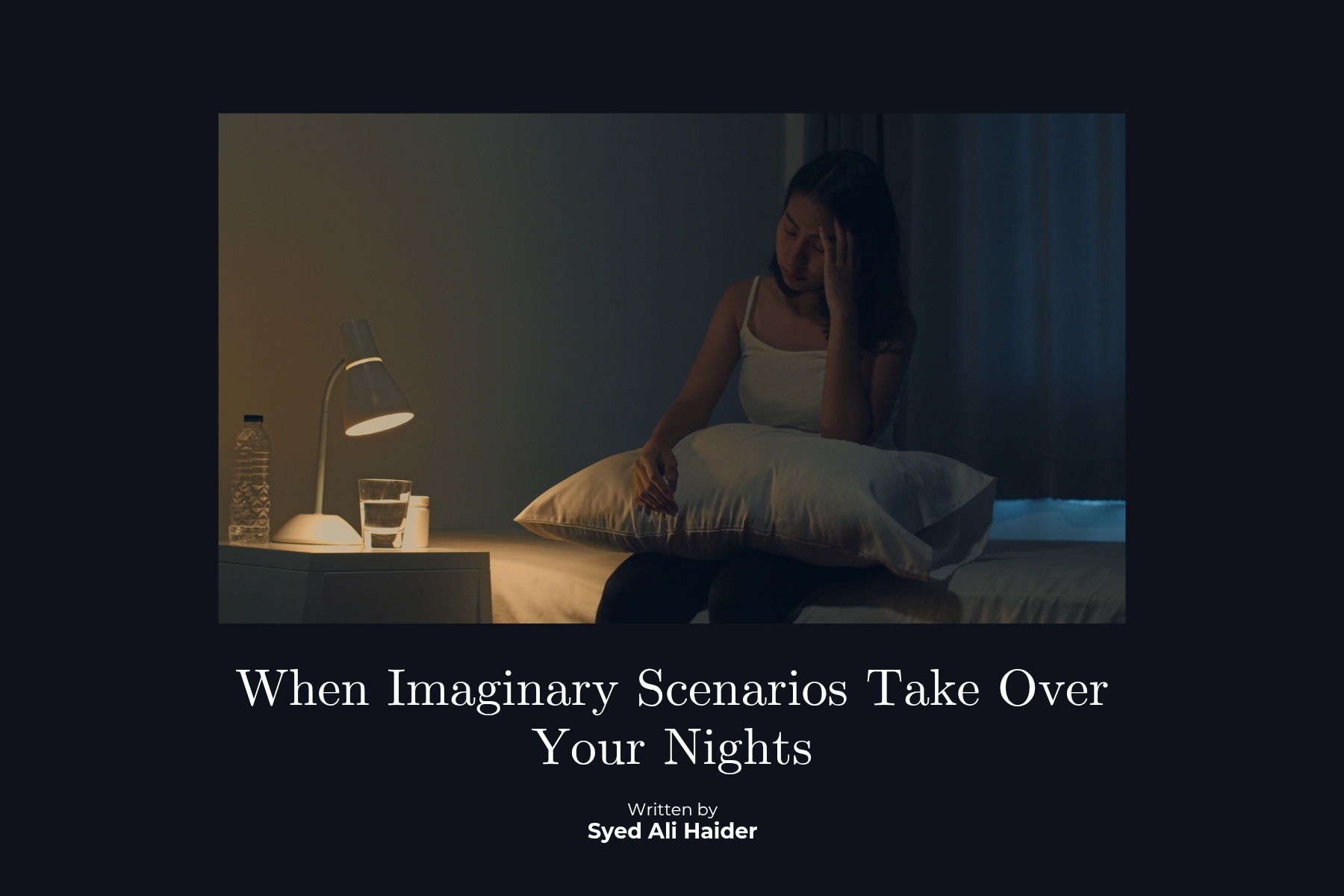When Imaginary Scenarios Take Over Your Nights
Have you ever noticed what happens in your mind right before you fall asleep?
You’re lying in bed, lights off, phone aside and suddenly your thoughts begin to drift.
You start replaying an old conversation, imagining how you should have replied, crafting the perfect comeback. Or maybe, your mind jumps ahead picturing a future argument or moment with someone, rehearsing your words, visualizing every detail, just to feel prepared and in control.
It feels normal, doesn’t it?
After all, who doesn’t daydream a little before bed?
But what if this mental habit isn’t just daydreaming what if it’s something deeper?
Psychologists call it Maladaptive Daydreaming, a coping mechanism where your mind creates vivid, movie-like scenarios that feel real, comforting, and emotionally intense.
Let’s explore what this means, why it happens, and how it silently shapes your emotional world.
What Is Maladaptive Daydreaming?
Maladaptive Daydreaming is a condition where your brain constructs vivid, detailed fantasies complete with storylines, characters, emotions, and sometimes even soundtracks.
It often begins as a harmless escape a way to unwind or self-soothe before sleep. But over time, it can become a nightly ritual, an alternate reality that feels more comforting than the real one.
In these imagined worlds:
- You say all the right things.
- The people around you understand you perfectly.
- Every ending is satisfying.
- Every outcome is under your control.
It’s a world where nothing goes wrong where life finally makes sense.
For some, these fantasies offer the happy endings they never got.
For others, they provide the intimacy or excitement real life has never given.
It’s peaceful. It’s perfect. It feels safe.
But here’s the truth: it’s not healing you it’s hiding you.
The Psychology Behind It
Maladaptive daydreaming often arises as a response to emotional pain. When real life feels unpredictable, unsafe, or disappointing, the mind looks for a place where everything is in control.
So, it builds one.
This imagined world becomes a refuge a safe space where:
- You are loved the way you wish to be loved.
- You succeed without fear of failure.
- You express emotions without being judged.
- You finally get closure, appreciation, and peace.
But while the fantasy world heals temporarily, it avoids the real problem.
It’s like putting a soft bandage on a deep wound soothing, but not curing.
Your real life remains untouched.
Your pain remains unresolved.
And slowly, the line between imagination and reality starts to blur.
The Nightly Ritual of Escape
For many people, these vivid fantasies become a ritual before bed.
Every night, as soon as you close your eyes, the reel begins a mental movie where you’re the main character, living the life you wish you had.
You may not realize it, but this becomes an emotional dependency.
Instead of processing your day, your emotions, or your truth you escape into a world that feels better.
You don’t do it because you’re weak.
You do it because your brain is seeking relief a temporary safe space from the chaos of the real one.
But ask yourself:
“Do I feel relaxed after these fantasies?”
Or
“Do I feel like I’m running away from something?”
The difference between relief and escape is everything.
Why It Feels So Real
The human brain is powerful. When you visualize something intensely, your brain reacts as if it’s actually happening.
Your heart rate changes.
Your emotions shift.
Your body releases chemicals that mimic real experiences.
That’s why these fantasies feel so comforting.
They trigger real emotions joy, love, control, validation but they come without the risk or uncertainty that real life carries.
Over time, this mental loop becomes addictive.
Your brain craves that perfect, predictable world and slowly, you start withdrawing from reality.
The Hidden Cost
While maladaptive daydreaming may seem harmless, it comes with emotional consequences:
- Disconnection from real relationships
- Difficulty focusing in daily life
- Increased anxiety or dissatisfaction
- Avoidance of real emotional work
- Insomnia or delayed sleep due to extended fantasies
You begin to live more in your head than in your world.
And no matter how perfect those dreams are they can’t replace real healing.
The Path Back to Reality
True healing begins when you start facing the very emotions your mind tries to escape.
Ask yourself:
- Why do I need these fantasies every night?
- What emotions am I trying to avoid?
- What am I craving in my imaginary world that’s missing in my real one?
When you gently bring awareness to your patterns, you begin to reclaim control not through fantasy, but through truth.
Start small:
- Journal your thoughts before bed.
- Practice mindfulness or meditation to ground yourself.
- Create safe emotional spaces therapy, support groups, authentic conversations.
- Replace escape with expression talk, write, cry, create.
Because no imagined world no matter how beautiful can replace the peace of being fully present in your real one.
Final Thoughts
Your fantasies are not the enemy.
They are signals whispers from your subconscious telling you what you long for.
Listen to them.
Honor what they reveal.
But don’t live inside them.
Because while dreams can guide you, only reality can heal you.
To truly grow, you must stop building perfect worlds in your head and start nurturing a real life that feels safe, fulfilling, and free.
You deserve more than imaginary peace. You deserve real peace.
If your nights are filled with endless “what ifs” and “alternate endings,”
it may be time to talk not to escape, but to truly heal.




